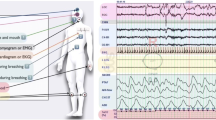We studied the immunological status and polymorphic variants of candidate genes in men with disturbances of autonomic nervous regulation under conditions of aerogenic exposure to benzene. The group of men with pathology of the autonomic nervous system (autonomic dysfunction syndrome) living under conditions of aerogenic exposure to benzene is characterized by increased blood contamination with benzene, which 1.5-fold surpassed this parameter in the group of conventionally healthy men (p<0.05). The immune profile of the surveyed men is characterized by increased specific sensitization (IgG to benzene) and activation of apoptosis (TNFR, p53) and phagocytosis. The production of serum IgA was also increased (p<0.05) in men of this group. The content of CD127— lymphocytes significantly (p<0.05) exceeded the reference level against the background of a significantly reduced (p<0.05) level of CD3+CD95+ lymphocytes irrespective of the presence or absence of autonomic nervous system pathology in men with excessive haptenic load with benzene. The revealed features of the immune status of men with autonomic regulation disorders were significantly associated (OR>1; p<0.05) with the variant allele of the FOXP3 immune regulation gene (rs3761547) and with wild-type allele of the SOD2 superoxide dismutase gene (rs2758330) and the corresponding homozygous genotypes. The established features of immune regulation (hyperproduction of IgG to benzene, imbalance of apoptosis markers (CD127—, CD3+CD95+, p53, and TNFR) against the background of altered polymorphism of candidate genes (FOXP3, SOD2) form a complex of genetic and immunological markers of autonomic regulation disorders in men living under conditions of aerogenic exposure to benzene.
Similar content being viewed by others
References
Anikina EA, Balabina NM. Prevalence, risk factors and clinical course of vegetative dysfunction syndrome. Sib. Med. Zh. (Irkutsk). 2011;102(3):23-27. Russian.
Antonen EG, Hyanikyaynen IV. Somatoform autonomous dysfunction as predictor of chronic cerebral ischemia. Uchenye Zapiski Petrozavodsk. Gos. Univer. 2014;(4):43-48. Russian.
Dolgikh OV, Zaitseva NV, Luzhetsky KP, Andreeva EE. Characteristics of immune and genetic disadaptation in children under hapten excessive load. Ross. Immunol. Zh. 2014;8(3):299-302. Russian.
Dolgikh ОV, Nikonoshina NA, Guselnikov MA. In-Vitro Assessment of Hapten-Induced Immune Regulation in Children with Asthenoneurotic Syndrome. Bull. Exp. Biol. Med. 2020;169(5):661-664. doi: https://doi.org/10.1007/s10517-020-04949-9
Efimova NV, Mylnikova IV. On the question of the impact of environmental factors and lifestyle on the formation of the syndrome of autonomic dysfunction in school children. Gig. San. 2019;98(1):76-81. doi: 10.18821/0016-9900-2019-98-1-76-81. Russian.
Orujov RA, Dzhafarova RE. Changes in the nervous system state and peripheral blood parameters under benzene intoxication during an experiment. Analiz Riska Zdorov’yu. 2017;(4):108-116. doi: 10.21668/health.risk/2017.4.12. Russian.
Addendum to the toxicological profile for benzene. Agency for Toxic Substances and Disease Registry, Division of Toxicology and Human Health Sciences. Atlanta, 2015. URL: https://www.atsdr.cdc.gov/toxprofiles/Benzene_Addendum.pdf
Boverhof DR, Ladics G, Luebke B, Botham J, Corsini E, Evans E, Germolec D, Holsapple M, Loveless SE, Lu H, van der Laan JW, White KL Jr, Yang Y. Approaches and considerations for the assessment of immunotoxicity for environmental chemicals: a workshop summary. Regul. Toxicol. Pharmacol. 2014;68(1):96-107. doi: https://doi.org/10.1016/j.yrtph.2013.11.012
Cascio WE. Proposed pathophysiologic framework to explain some excess cardiovascular death associated with ambient air particle pollution: Insights for public health translation. Biochem. Biophys. Acta. 2016;1860(12):2869-2879. doi: https://doi.org/10.1016/j.bbagen.2016.07.016
Florea VG, Cohn JN. The autonomic nervous system and heart failure. Circ. Res. 2014;114(11):1815-1826. doi: https://doi.org/10.1161/CIRCRESAHA.114.302589
Flynn JM, Melov S. SOD2 in mitochondrial dysfunction and neurodegeneration. Free Radic. Biol. Med. 2013;62:4-12. doi: https://doi.org/10.1016/j.freeradbiomed.2013.05.027
Fukui M, Zhu BT. Mitochondrial superoxide dismutase SOD2, but not cytosolic SOD1, plays a critical role in protection against glutamate-induced oxidative stress and cell death in HT22 neuronal cells. Free Radic. Biol. Med. 2010;48(6):821-830. doi: https://doi.org/10.1016/j.freeradbiomed.2009.12.024
Lieb R, Pfister H, Mastaler M, Wittchen HU. Somatoform syndromes and disorders in a representative population sample of adolescents and young adults: prevalence, comorbidity and impairments. Acta Psychiatr. Scand. 2000;101(3):194-208.
Oda JM, Hirata BK, Guembarovski RL, Watanabe MA. Genetic polymorphism in FOXP3 gene: imbalance in regulatory T-cell role and development of human diseases. J. Genet. 2013;92(1):163-171. doi: https://doi.org/10.1007/s12041-013-0213-7
Sakaguchi S, Miyara M, Costantino CM, Hafler DA. FOXP3+ regulatory T cells in the human immune system. Nat. Rev. Immunol. 2010;10(7):490-500. doi: https://doi.org/10.1038/nri2785
Author information
Authors and Affiliations
Corresponding author
Additional information
Translated from Byulleten’ Eksperimental’noi Biologii i Meditsiny, Vol. 171, No. 2, pp. 191-195, February, 2021
Rights and permissions
About this article
Cite this article
Dolgikh, О.V., Zaitseva, N.V. & Nikonoshina, N.A. Conditions of Aerogenic Exposure to Benzene and Genetic Status as Factors of Formation of Immune Profile Features in Men with Autonomic Regulation Disturbances. Bull Exp Biol Med 171, 226–229 (2021). https://doi.org/10.1007/s10517-021-05199-z
Received:
Published:
Issue Date:
DOI: https://doi.org/10.1007/s10517-021-05199-z




